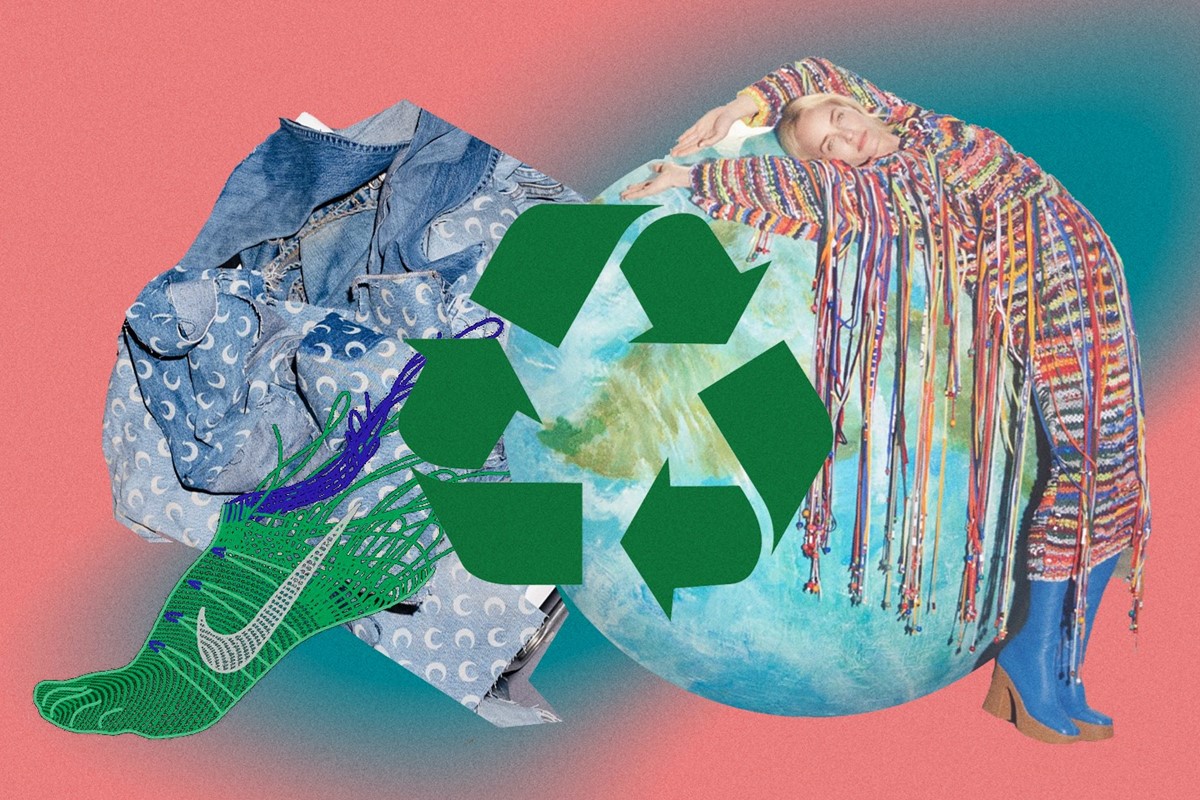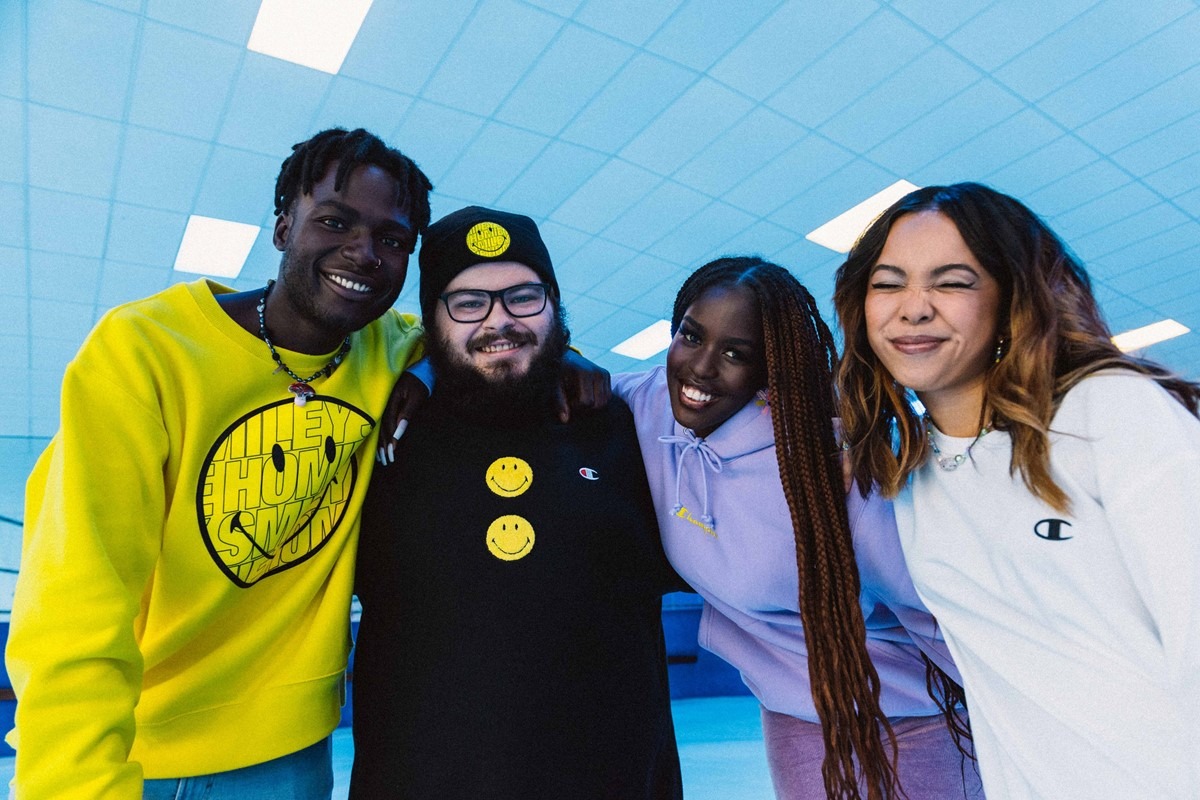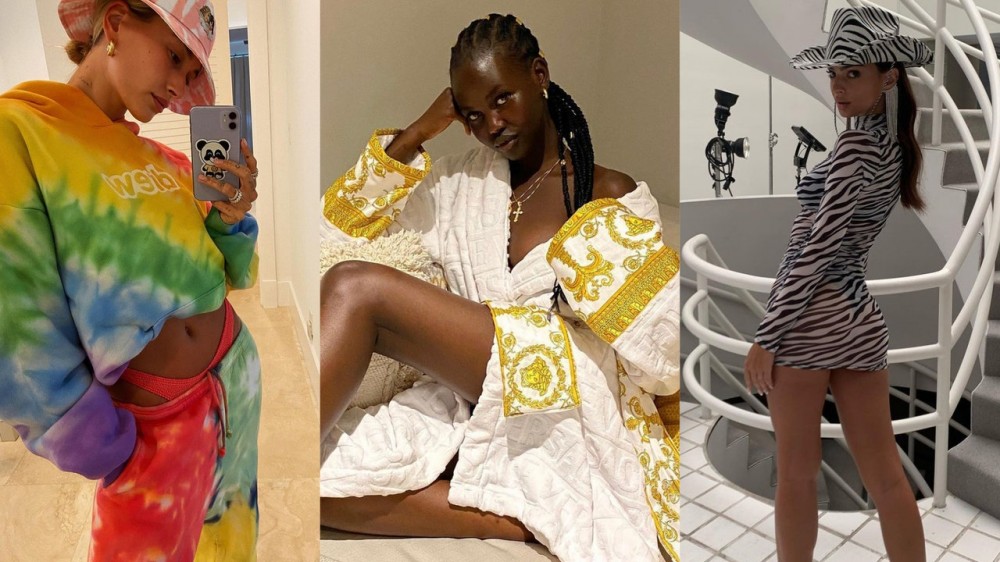
What fashion got right in 2021
From huge wins for garment workers to forays into wild new sustainable materials, here’s how the industry made progress in another extraordinary year
Obviously, quite a lot went wrong this year. We’re on season nine of what we thought was a one season pandemic for a start, and the earth is literally losing its sparkle. However, amongst the deluge of bad news we have witnessed progress, and fashion in particular has seen some significant wins this year where the environment and human rights are concerned. Here we round up some reasons to celebrate.




GARMENT WORKER WINS
Faced with COVID wage theft, union busting activities, and dangerous working conditions, garment workers, unions, and labour organisations have been busy organising, gaining some serious ground in the fight for garment workers’ rights in the process.
The Bangladesh Accord, which was devised in the wake of the 2013 Rana Plaza factory collapse had helped identify 87,000 safety issues in Bangladesh garment factories, subsequently eliminating 90 per cent of them. At risk of expiring earlier this year as brands looked for easier options which meant they weren’t legally and financially on the hook for safety issues, a concerted campaign added public pressure. As a result, not only was the legally binding agreement extended, it was expanded. Now known as the International Accord for Health and Safety in the Textile and Garment Industry, the agreement promises to expand the program to other countries, helping protect even more garment workers, and has the option to be expanded in scope to include further human rights issues.
“Despite often being painted otherwise, garment workers are active and instrumental in their own progress – not saved by heroes in the global north – and organising in the sector has been more visible than ever”
California saw another big win for garment workers when S.B. 62 (known as the Garment Worker Protection Act) was passed. The state now requires an hourly minimum wage to be paid to garment workers and prohibits piecework, a practice where workers are paid by the garment which often results in a criminally low equivalent hourly rate of less than $3. The act also penalises manufacturers and brands for illegal practices like wage theft.
Despite often being painted otherwise, garment workers are active and instrumental in their own progress – not saved by heroes in the global north – and organising in the sector has been more visible than ever. Members of the Tamil Nadu Textile and Common Labour Union (TTCU) won compensation for the family of Jeyasre Kathiravel, a Dalit garment worker who was sexually harassed and murdered. They continue to push for an enforceable agreement to end gender-based violence; in March a coalition of more than 200 organisations across 40 countries launched a week of action, calling on brands and manufacturers to pay workers and respect labour rights; and in Cambodia and Bangladesh, garment workers protested outside their factories on Make Amazon Pay Day, held on Black Friday.
That protests, strikes and campaigns still need to happen speaks to the amount of progress still needed, but change is afoot.
LEGISLATION IS THE NEW BLACK
The next big thing in fashion? Legislation. Specifically, legislation to tackle greenwashing and the wanton environmental destruction caused by fashion brands. In March, the EU approved the proposal for a directive on “mandatory human rights, environmental, and good governance due diligence”, meaning that, when it becomes legislation, companies will have to pay a penalty if they cause harm by not doing their due diligence. Companies including fashion brands will have to take responsibility for their entire supply chain making sure they’re preventing child labour, allowing freedom of association, and protecting biodiversity, among other things.
In October, the UK’s Competition and Markets Authority announced the Green Claims Code. Brands making misleading or vague sustainability claims, claims that are not substantiated, that omit information, and that don’t take into consideration the entire life cycle of a product could, from January 2022, find themselves in breach of consumer protection laws. So, a fast fashion brand dropping a ‘sustainable’ collection without stating exactly what makes it sustainable will no longer fly.
Smaller scale action is also taking place, such as Massachusetts’ plan to add textiles to the list of materials banned from disposal in the state to help boost recycling rates and recapture resources, and further legislation is hopefully on the horizon. The UK announced that it will consult on an extended producer responsibility scheme (where producers take physical or financial responsibility for the disposal of goods) for textiles; the US Federal Trade Commission is due to review its Green Guides (its version of the Green Claims Code) next year; the EU proposed stricter sustainability reporting measures for large companies; and a group of over 50 brands, suppliers, NGOs, retailers, and associations supported a COP26 request by the Textile Exchange to incentivise the use of “environmentally preferred” materials.
CLOSING THE LOOP
Brands producing so much that they can just give it away for free – as we saw on Black Friday – has led to areas such as Chile’s Atacama desert becoming fashion dumping grounds. Piled high, the discarded clothes allow brands and consumers to see the impact of a lightning fast, linear fashion system. In response, fashion companies are beginning to adopt circular practices to keep clothes, textiles, and fibres in the loop, preventing waste.
This year the likes of Nike, Mara Hoffman, Raeburn, and Rachel Comey have joined the ranks of brands embracing resale both through their own platforms and partners such as Responsible and Recurate. Net-a-Porter and Harvey Nichols now both offer the opportunity for users to sell pre-loved garments, while Vestiaire Collective launched a new ‘Brand Approved’ tag in partnership with Alexander McQueen, which calls on trusted clients to sell their un-worn pieces which are then authenticated by both Vestiaire Collective and the brand.
Of course, circularity shouldn’t start with end-of-life, it needs to be designed in from the beginning. To this end, ASOS, in partnership with Centre for Sustainable Fashion, released its Circular Design Guidebook in November. The free, interactive resource is designed to help designers and students “create fashion products that support the circular economy.” The Ellen MacArthur Foundation also launched a similar tome in December. The book, Circular Design for Fashion, includes contributions from Bethany Williams, Marine Serre, and Duran Lantink among others. Insights from ASOS’ guidebook include making lay plans more efficient to minimise waste, product durability, and textile recycling technologies, while the Ellen MacArthur offering seeks to “reshape the whole system”.
“For circularity to be a true success, material innovation is also needed, and this year, it’s been a prominent theme. Finland-based textile-tech company Spinnova has developed a pulp-based fibre which actually improves in quality each time it’s recycled and reprocessed”
For circularity to be a true success, material innovation is also needed, and this year, it’s been a prominent theme. Finland-based textile-tech company Spinnova, which IPO-ed in 2021, has developed a pulp-based fibre which actually improves in quality each time it’s recycled and reprocessed, tackling the tricky issue of many materials becoming less and less useful with each cycle, meaning recycling effectively becomes downcycling. Heritage Italian denim brand Candiani launched Coreva, a world-first biodegradable stretch denim which uses natural rubber instead of synthetic yarns, Hermès created the first bag using Sylvania mushroom leather, and Orange Fibre, a start-up which makes fabrics out of citrus fruit by-products won the Vogue Yoox Challenge 2021
PUMA is taking a two-pronged approach with its RE:SUEDE pilot, which launched in November, combining material innovation with takeback infrastructure, another vital tenet of circularity. 500 participants in the pilot will wear an updated version of the PUMA SUEDE (made from biodegradable TPE and hemp fibres) for six months to test durability before sending them back via a newly introduced system. From there, the sneakers will be subject to a biodegradation process. While brands like Thousand Fell have already innovated circular sneakers in one guise, the more solutions, the more funding, and the more innovation, the better.
SLOW PROGRESS, BUT PROGRESS NEVERTHELESS
As we face the climate crisis, there’s absolutely no doubt the fashion industry is progressing too slowly. But still, it is progressing thanks to dedicated, innovative creators and organisers who are constantly seeking to make an impact in new areas. The UN Fashion Charter homed in on sustainable communication during a COP26 announcement, and the World Sustainability Organisation has launched the WSO Models and Agency Academy to promote an ethical and sustainable approach to modelling. No stone is being left unturned.
Despite the prominence and power of Disney villain-esque billionaire CEOs chasing profit over all else, good things are happening. If we focus on bringing them together, and hit the accelerator, we could be onto something.



